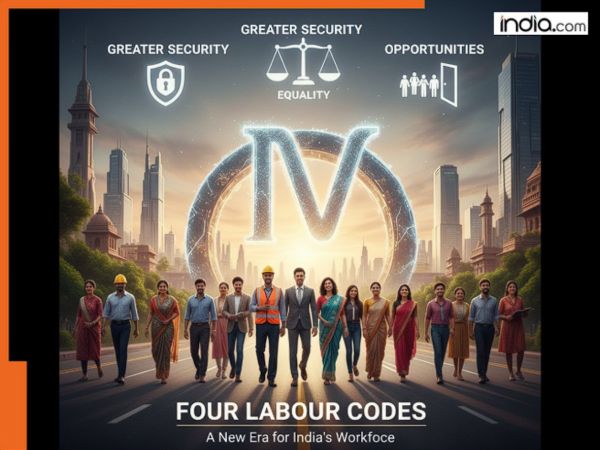
Today India has officially implemented four consolidated Labour Codes which subsume 29 central labour laws in what is being described as one of the biggest reforms of the sector since Independence. The four Codes on Wages (2019) Industrial Relations (2020) Social Security (2020) and Occupational Safety Health & Working Conditions (OSHWC) also called the Safety Code (2020) took effect from November 21 2025 following nearly a year of state-level consultations and final preparations by a central legislative panel.
Shramev Jayate!
Today our Government has given effect to the Four Labour Codes. It is one of the most comprehensive and progressive labour-oriented reforms since Independence. It greatly empowers our workers. It also significantly simplifies compliance and promotes ‘Ease of…
— Narendra Modi (@narendramodi) November 21 2025
The government described the codes as the result of “efforts to simplify modernise and amalgamate archaic and dispersed labour laws in order to make them more business and industry friendly while at the same time enhancing the rights privileges and protection of workers”.
“These four codes are key instruments in our efforts to build a protected future-ready workforce and towards making our industries more resilient and stronger” it said adding that they are in line with global standards and form part of the Aatmanirbhar Bharat vision.
Major Changes under the Four Labour Codes
The four Labour Codes that came into effect on November 21 overhaul and standardise the regulation of work in India by effecting many sweeping changes.
Some of the most significant include:
Appointment letters for every worker a key measure to increase transparency and formality.
Social security for all workers with universal access to benefits such as provident fund (PF) Employee State Insurance Corporation (ESIC) and insurance. Gig and platform workers are explicitly mentioned.
A statutory minimum-wage right for all workers bringing an end to industry-specific wage ceilings and leading to a de facto increase for many workers.
Timely payment of wages to all workers with no delays or discretionary pay.
Annual health check-ups for workers aged over 40 to improve preventive health.
Access to night shifts for women workers in all sectors including mining and hazardous industries subject to safety norms and consent.
Pan-India ESIC coverage including small and hazardous establishments and a simplified compliance regime (single registration licence and return).
Uniform work protections are extended across industries such as fixed-term employees (who will get benefits like gratuity after one year like permanent employees) gig and platform workers (who are now formally recognised and platforms will need to contribute to welfare funds 1–2% of turnover) contract workers (who now have right to social security health benefits and annual medical check-ups) and women workers (who get equal pay non-discriminatory rights and obligations a wider definition of family night shift option etc. ).
The codes also standardise wages social benefits and working conditions for sectors such as Youth and MSME workers beedi/plantation/dock workers IT/ITES employees etc.
Changes in Systems & Governance
The Labour Codes also bring structural and governance changes beyond specific sectors and rights.
These include a National Floor Wage gender-neutral rules (including the recognition of transgender persons) a lighter Inspector-cum-Facilitator approach (facilitation and awareness over just enforcement) faster dispute resolution (two-member Industrial Tribunals as opposed to the current three-member bodies) a National Occupational Safety & Health Board to frame standardised safety norms mandatory safety committees in large establishments (500+ workers) and higher thresholds for factories to come under the regulation of these laws thus easing the compliance burden on small units.
Impact of the New Labour Codes
According to the government the reform significantly expands the scope of India’s social-security net. It estimates the coverage of social security in the workforce has already gone up from 19% in 2015 to over 64% in 2025 and expects the new Labour Codes will widen it further especially for gig and migrant workers.
For the transition period certain existing rules under the previous labour laws will continue to apply until they are replaced by new schemes or regulations formulated in consultation with various stakeholders.
India is getting rid of its old confusing labor laws and replacing them with four new simpler ones. These new rules are better for workers easier for businesses to follow and make Indias work laws fit for todays world. Its a big step forward for workers rights.
Contact to : xlf550402@gmail.com
Copyright © boyuanhulian 2020 - 2023. All Right Reserved.